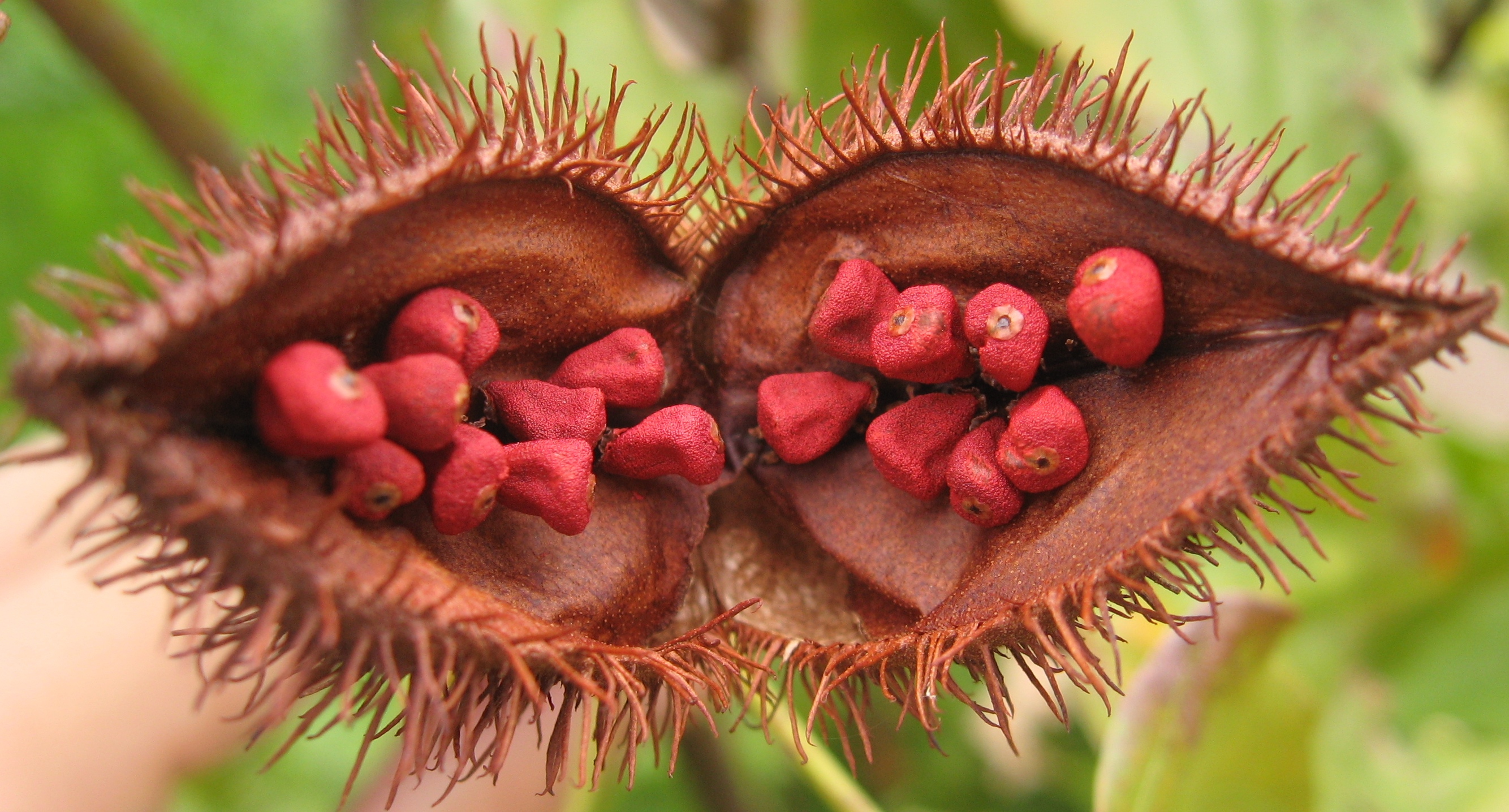Have you ever wondered why some cheeses, like Cheshire, Red Leicester, and Shropshire Blue, have such a distinct red or orange hue? As it turns out, the colour is not naturally occurring in milk; it is added to the cheese to enhance its appearance. But what is the source of this colour, and how did it become so popular? In this article, we explore the science and history behind the use of annatto as a natural vegetable colourant, and how it came to be the preferred colouring agent for many traditional British territorial cheeses.

What is Annatto?

Annatto. (2022, August 17). In Wikipedia. https://en.wikipedia.org/wiki/Annatto
Annatto is a natural colourant derived from the seeds of the Achiote tree (Bixa Orellana), which is native to South America and the Caribbean. These seeds are characterised by their brick-red colour and have been used for centuries to dye textiles, cosmetics, and even Aztec paintings.
Nowadays, the primary use of annatto is to colour food, particularly cheese and butter. The colour is extracted from the seeds by drying them before soaking them in an alkaline solution. This solution is then added to the milk at the beginning of the cheese-making process, giving the curds their distinctive orange and red colour.
The History of Annatto in Cheese-Making
The use of annatto in cheese-making can be traced back to 16th-century England. The practice is thought to have started in southwest England, particularly Gloucestershire, and spread to surrounding counties such as Warwickshire, Derbyshire, Staffordshire, Cheshire, and Leicestershire.
Traditional British territorial cheeses were initially coloured with a variety of agents, such as carrot juice, turmeric, marigold petals, and even homegrown saffron. However, in the 18th century, imported annatto from the Americas began to replace locally sourced colourants, as it produced a more vibrant colour with less impact on texture and flavour.

The Reason Behind Coloring Cheese
The main reason why cheese-makers colour their cheese is for aesthetics. In the past, the colour of cheese was seen as an indication of quality. The beta-carotene pigment found in the fat of milk from full-fat, pasture-fed cows gave the milk a yellow tinge, which was considered desirable. Cheese made from this milk was also richer in flavour and had a yellow colour, which was highly sought after.
Plus, colouring helps aid in tempting customers to buy. More colourful cheese psychologically affects customer buying decisions as they assume it will be more flavourful. Historically, when milk quality was inconsistent, some cheese-makers added colour to produce a more uniform, year-round tinge. Annatto was added to winter milk to give it a deeper orange or yellow hue, and it was also used to mask the true colour of high-acid curds, such as those found in Appleby’s Cheshire.
The use of annatto in cheese-making has a long and fascinating history. Although initially used as a colouring agent for traditional British territorial cheeses, it is now used widely in the food industry. The colouration of cheese is primarily for aesthetic purposes, and annatto is the preferred natural vegetable colourant due to its ability to produce a vibrant colour without impacting texture or flavour. Next time you enjoy a slice of orange or red cheese, you'll know the fascinating history and science behind its colour.
At Rennet & Rind, we've carefully selected a range of artisanal cheeses sourced exclusively from local farms that uphold traditional methods. As a renowned cheesemonger and affineur, our online store offers an exquisite array of the UK's most exceptional and distinctive cheese offerings. For a delightful tasting experience, consider our popular mystery cheese box, which includes a thoughtfully curated assortment of our top five cheese picks. It's the perfect opportunity to savour the excellence of Rennet & Rind's celebrated artisanal cheeses.

Unnaturally coloured cheese is surely a marketing ploy to attract the poor rather than the educated.